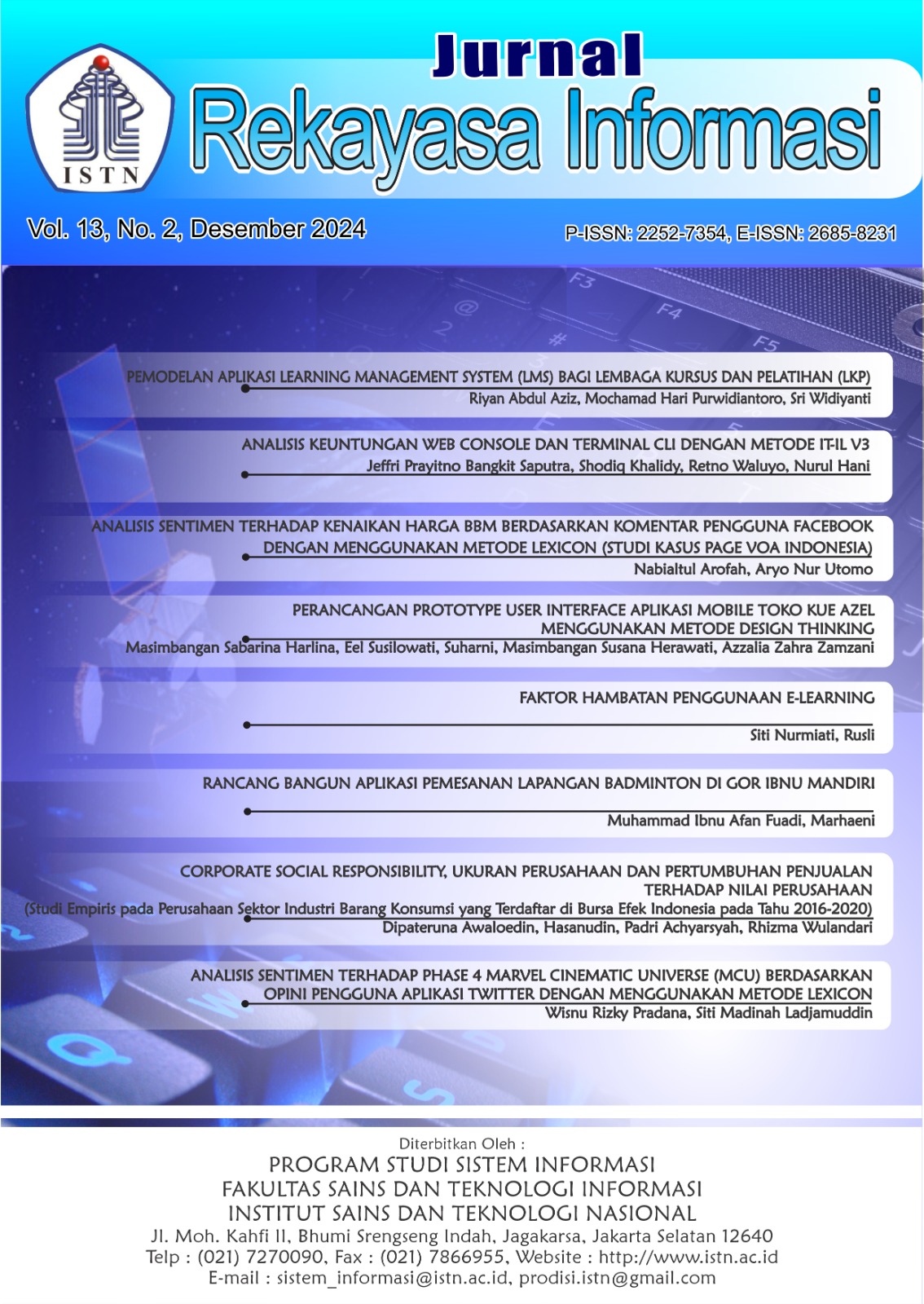FACTORS HINDERING THE USE OF E-LEARNING
Abstract
Many people are accustomed to learning in the classroom, learning that does not require physical space or learning online is a new thing for students, both students and students, this certainly requires time to get used to carrying out the learning process online. One of the main aspects that influences the shift from face-to-face learning (offline/traditional) to online learning (online) is communication. The teaching model that is implemented traditionally means that the learning process is carried out face-to-face, where students and educators carry out the learning process in the classroom with a predetermined schedule. Educators who are known as teachers must do their best to ensure the effectiveness of the same communication in online learning. This study aims to determine the inhibiting factors for the use of e-learning in Higher Education, especially in one of the Private Higher Education located in the Bekasi area, West Java, 80 respondents with profiles (age, gender, education, study program, devices used, frequency of use, internet access location, duration of internet use, e-learning platform, frequency of internet use, duration of e-learning use). The output results show that the characteristics of the respondents who dominate are Age 18-24 years (55), Female gender (42), Bachelor's degree education (100), English study program (69), Devices used Laptops and Smartphones (63), Daily device use (76), length of computer use 4-8 years (32), internet access places are Home, Campus and Public Access (51), length of internet use >8 years (47), Google Meet e-learning platform (58), while the inhibiting factors for the use of e-learning are internet limitations (39), internet network (19), system applications (14), learning content (8), then a solution has been provided to become one of the supporting factors for success in the use of e-learning technology (Siti Nurmiati A. S., 2019)(Nurmiati et al., 2020)
Published
2024-12-26
How to Cite
Nurmiati, S., & Rusli, R. (2024). FACTORS HINDERING THE USE OF E-LEARNING. JURNAL REKAYASA INFORMASI, 13(2), 97-105. https://doi.org/https://doi.org/10.37277/jri.v13i2.2169
Section
Artikel


1.png)

